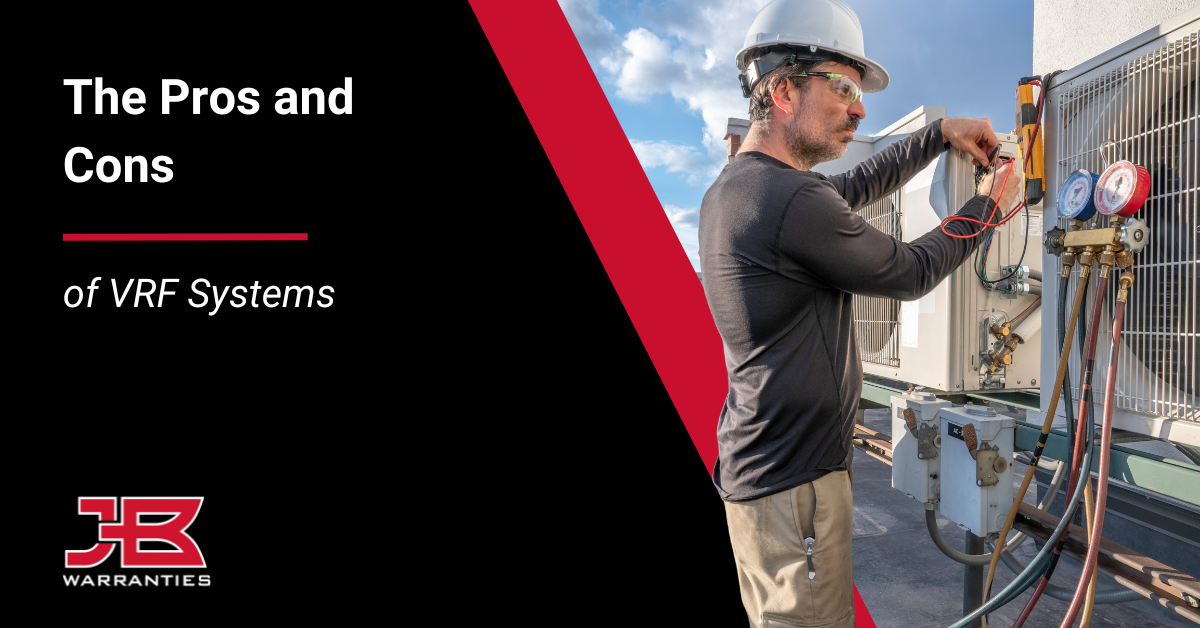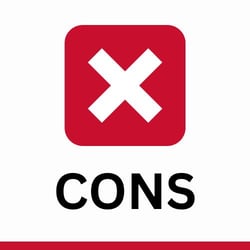
Variable refrigerant flow (VRF) systems offer consumers the strongest return on investment (ROI) with some of the highest energy efficiency across all HVAC solutions—but what’s the deal? Though first introduced in Japan in the late 1980s, the U.S. didn’t catch wind of VRF technology for nearly two decades. Fast-forward to 2010, the Air-Conditioning, Heating, and Refrigeration Institute (AHRI) released a VRF standard of performance rating, which fueled strong American adoption.
Today, VRF HVAC systems are the standard for commercial spaces across the U.S., making it vital for contractors and construction professionals to understand exactly what it is, how it operates, and its most notable pros and cons. Below, we answer the most frequently asked questions about VRF in HVAC and describe the drawbacks and advantages so you can determine if it’s right for your operations.
What is a Variable Refrigerant Flow (VRF) System?
Like any HVAC system, a variable refrigerant flow (VRF) system functions through an indoor unit and an outdoor unit. But unlike many traditional HVAC systems, a typical VRF system connects a single outdoor air condenser to multiple indoor units with a network of refrigerant lines and air handlers that heat or cool individual zones of a building. Such systems eliminate the need for an expansive duct system and also enable users to better control temperatures from zone to zone.
In the past, VRF in HVAC design was seen in commercial conditions, such as office buildings and retail and industrial spaces, due to the high demand for zoned climate control. However, industry innovations have enhanced VRF system scalability over time, allowing for use in large commercial buildings and across small to midsize residential applications. With such strong adoption, it’s no surprise the VRF system market is expected to grow at a CAGR of 12.56% from 2020 to 2027!
How Does a VRF System Operate?
VRF solutions are often referred to as multi-split systems due to their ability to provide zoned heating and cooling control without extensive ductwork. Since these are ductless systems, VRF units rely on a heat pump or a heat recovery system that maintains a refrigerant flow to each handler, providing simultaneous heating and cooling across an entire building.
The design of a VRF system typically consists of a single outdoor condenser with varying amounts of indoor units dependent on the number of zones consumers wish to have temperature control over. The unit’s outdoor condenser pressurizes a refrigerant using an inverter compressor, which then flows through small-diameter refrigerant piping to reach each zone’s evaporator coil.
The VRF refrigeration cycle is completed once the pressurized refrigerant flows back from the indoor unit’s evaporator coil and returns to the outdoor unit to be condensed back into a liquid. The cycle not only enables individual climate control across each zone but also minimizes overall energy consumption by only circulating the amount of refrigerant necessary to heat or cool each zone.
What Are the Pros of a VRF System?
 With the rising demand for VRF in HVAC markets, you might be curious what benefits these systems can offer. To help determine if VRF services are right for your HVAC business (and your customers), take the time to first consider each advantage below.
With the rising demand for VRF in HVAC markets, you might be curious what benefits these systems can offer. To help determine if VRF services are right for your HVAC business (and your customers), take the time to first consider each advantage below.
1. Energy Efficiency
While VRF systems will vary in levels of efficiency, the distribution of heating and cooling using refrigerant alone achieves a far higher energy efficiency ratio (EER) versus traditional HVAC units. In fact, VRF systems can offer energy savings of up to 55% when compared to conventional fixed-capacity HVAC systems. And with more than 30% of energy consumption being lost to traditional ductwork, VRF technology’s duct removal helps lead customers to even stronger energy savings.
2. Easy Installation and Flexible Design
Compared to traditional HVAC applications, VRF systems weigh less, come in a much more compact size, and don’t require bulky distribution fans, water pipes, or ductwork—making installation much easier for contractors. With small-diameter piping, compact indoor units, and potentially no need for designated mechanical rooms, VRF systems can also increase a customer’s usable space and overall design flexibility.
3. Consistent Comfort
One of the key selling points for VRF units is their ability to provide consistent comfort across all areas of a building. Unlike conventional systems, which switch on and off and cause temperature fluctuations, the compressor speed of a VRF unit adjusts itself as needed. VRF systems can continuously run for extended periods of time, providing consistent climate control without unwanted fluctuations. Many VRF systems are also equipped with branch controllers, which enable simultaneous heating and cooling.
What Are the Cons of a VRF System?
 Of course, no system is perfect. In addition to the advantages of VRF in HVAC design, understanding the potential downfalls of these units allows contractors to more effectively determine if they should offer such services and help their customers understand potential risks.
Of course, no system is perfect. In addition to the advantages of VRF in HVAC design, understanding the potential downfalls of these units allows contractors to more effectively determine if they should offer such services and help their customers understand potential risks.
1. Upfront Costs
Due to the complexity of the system and its specialized components, the upfront installation costs of variable refrigerant flow units are usually more expensive than traditional applications. While installation costs will vary depending on a location’s size and specific climate control needs, customers can expect to spend around $18 per square foot served on average. However, contractors should mention the strong return on investment customers may incur thanks to the high energy efficiency VRF systems have to offer.
2. Specialized Maintenance Required
For HVAC service providers looking to offer VRF services, it’s important to also understand the specialized future maintenance your customers will require. Expert refrigerant piping knowledge is required for the installation of VRF units and may require contractors to first undergo specialized training before offering such services. VRF systems also require more frequent maintenance to ensure optimal ongoing system performance, which results in higher maintenance costs for customers compared to traditional systems.
3. Higher Risk of Refrigerant Leaks
Due to the long refrigerant lines and connections that are required for a VRF system, customers face a higher potential for refrigerant leaks. Highlighting the importance of routine maintenance, customers must understand that VRF leaks frequently go undetected due to refrigerants being odorless and can be highly dangerous to their health. In addition to routine maintenance and inspection, contractors can also consider offering refrigerant detectors to ensure complete customer protection.
Equip Your VRF System Services with JB Warranties
Whether you're equipping a small residential home or a large commercial property with a new VRF unit, remember that JB Warranties has you covered. In addition to residential services, JB Warranties offers several warranty options for commercial-grade equipment, including variable refrigerant flow (VRF) systems ranging in a variety of labor, parts, and parts allowance coverages.
With the continuing rise of VRF in HVAC, now is the time to learn more about JB Warranties Premium Protection Plans—and your business can leverage them in both residential and commercial applications. Don’t wait, get in contact with us today to learn more!
Nick Ahrens
National Account Manager






